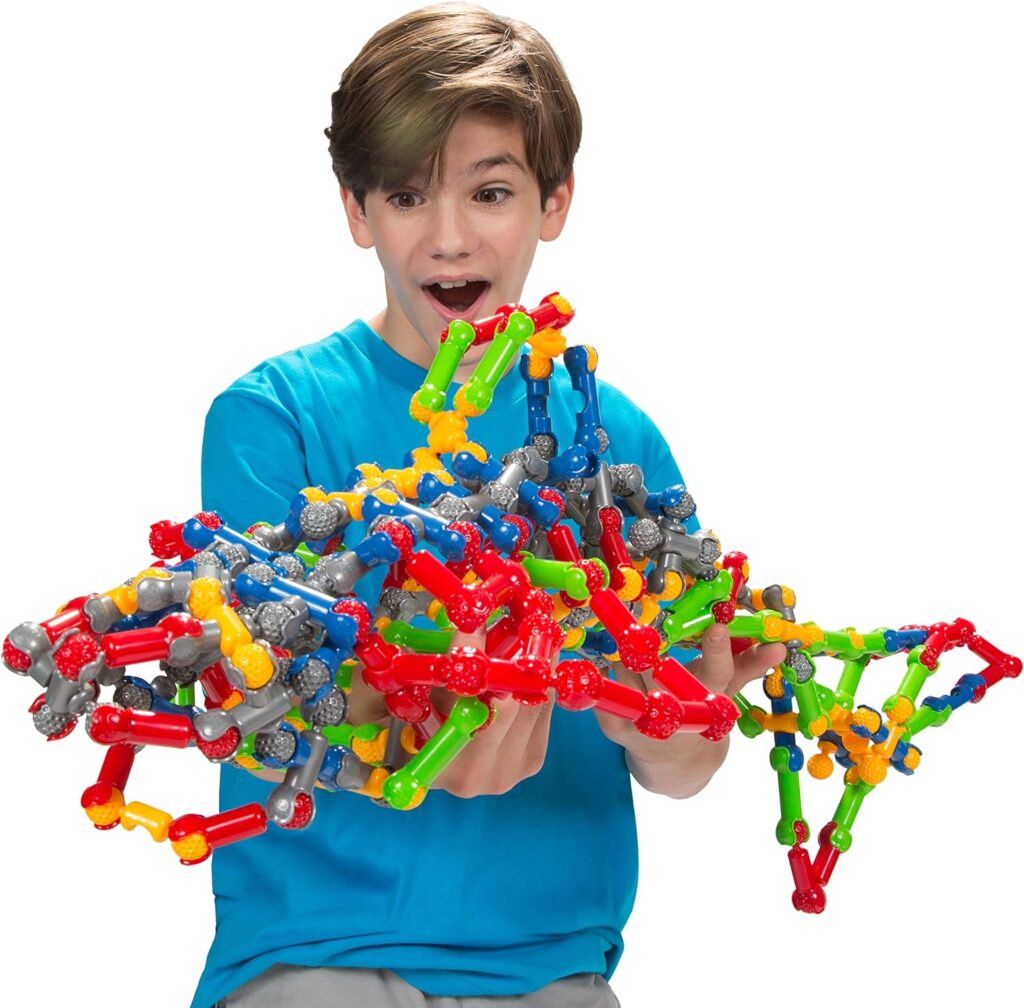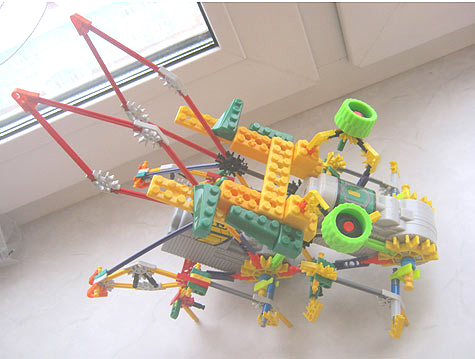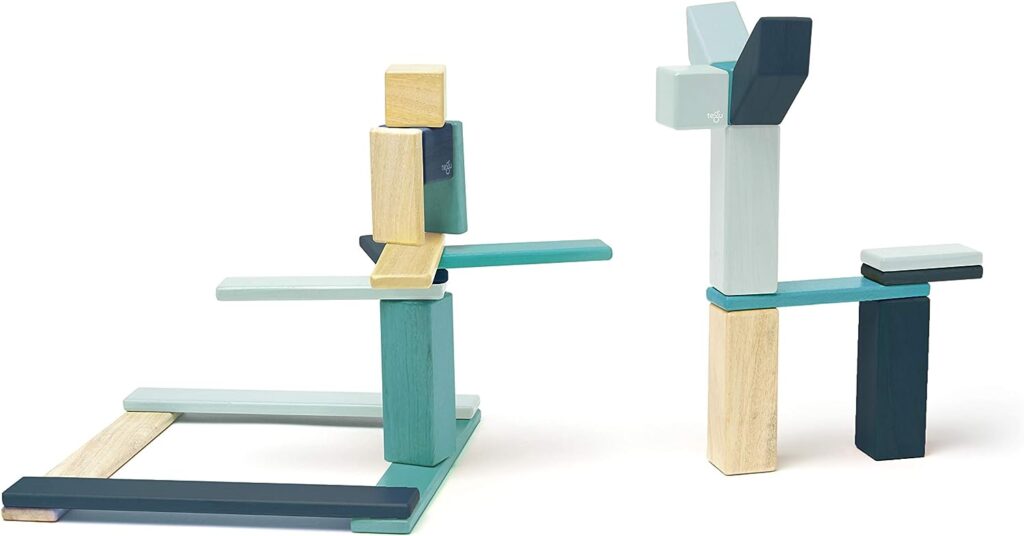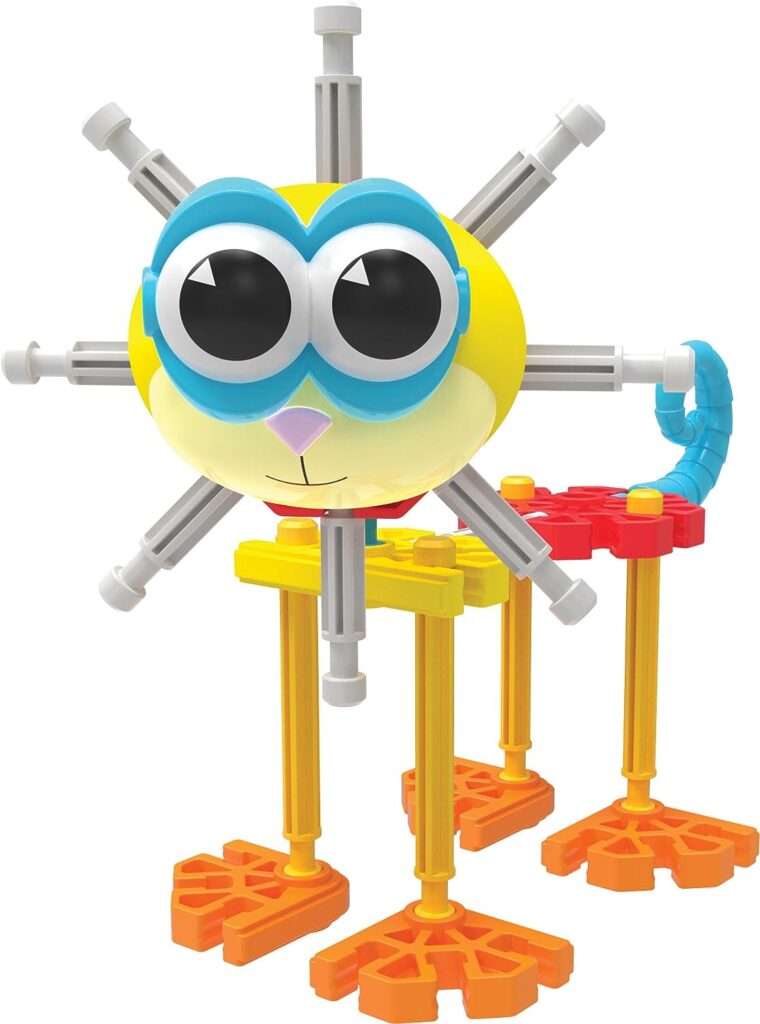Think Fast Toys blocks are very similar to Gakken New Blocks and its clones. They have pieces of similar shapes. However, it is not a “Gakken clone”, because some pieces are unique, and you can’t find them in the actual Gakken sets. Even if this set was, in fact, inspired by Gakken, this is not necessarily a bad thing. Many countries released their own waffle blocks over the years, often with their own unique tweaks, and this only added variety to the market.
This set focuses on building of cars and planes, but you can create any shape from these pieces. The set also comes in a thick plastic storage box.
Gakken is probably one of the most popular “waffle” blocks. The Gakken Blocks sets have many different forms and shapes of the blocks. There are arched blocks, blocks with different numbers of pegs on different sides, and figurines. There are also some pieces that can work like the rails for the Gakken trains. Those same pieces are just as thick as any other Gakken block, and you can use them in many ways, not just for building rails.
Gakken are Japanese sets, and Japanese Amazon has a bigger choice of them. But the shipping may be long and expensive. In countries that are far from Japan, finding these sets can be more tricky, but there are plenty of sets that have pieces of the same shapes.
Original Gakken Blocks sets were invented in Japan in the 1960s. Their original purpose was education and helping children develop imagination and fine motor skills. Gakken quickly became popular in Japan, and they are one of the oldest “waffle” blocks that are still around. There are many sets that try to repeat the Gakken concept, but not all of them have this high quality. Another similar set brand is Danish Plus Plus, but in Plus Plus all the pieces have the same shape.









